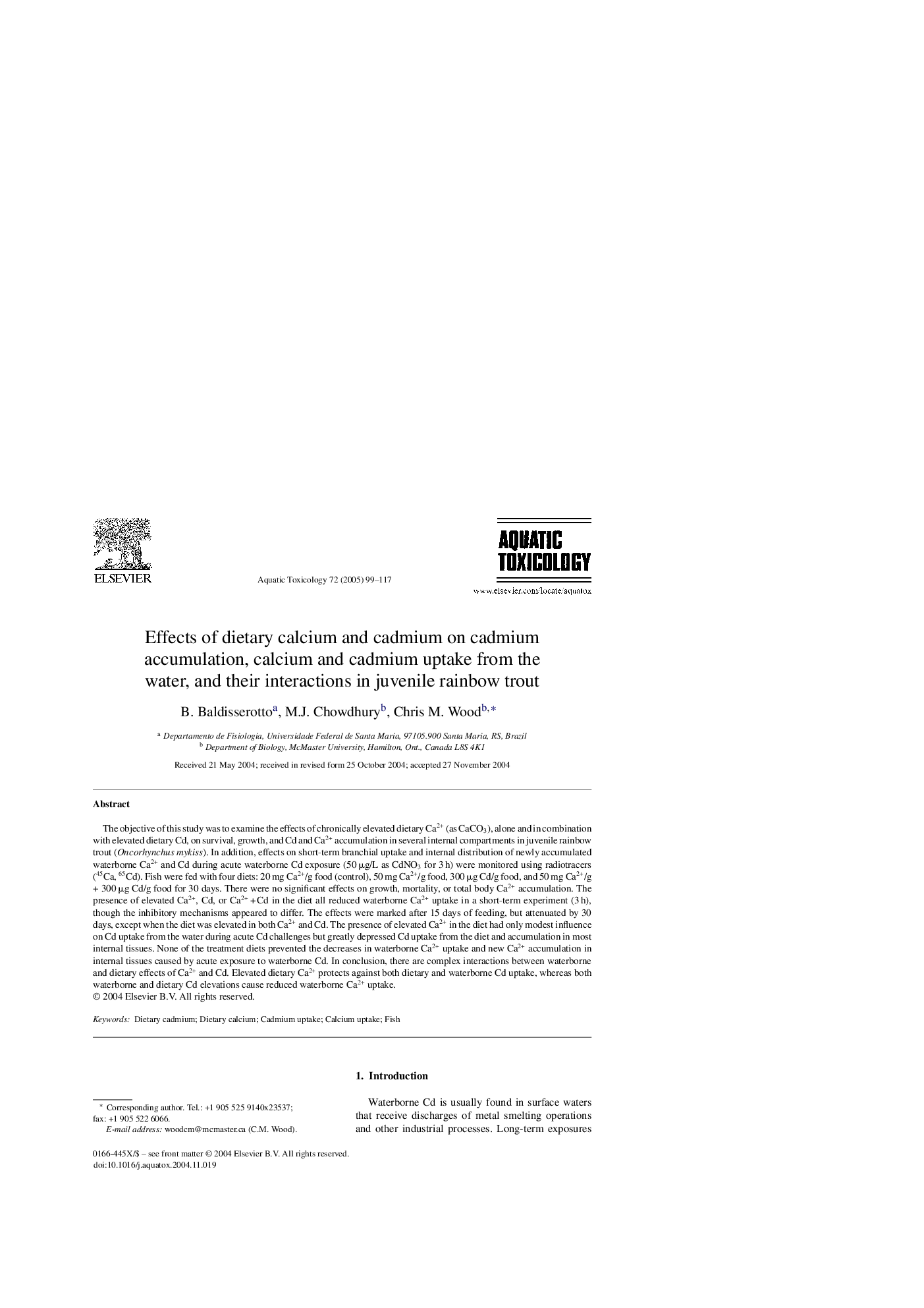| Article ID | Journal | Published Year | Pages | File Type |
|---|---|---|---|---|
| 9478295 | Aquatic Toxicology | 2005 | 19 Pages |
Abstract
The objective of this study was to examine the effects of chronically elevated dietary Ca2+ (as CaCO3), alone and in combination with elevated dietary Cd, on survival, growth, and Cd and Ca2+ accumulation in several internal compartments in juvenile rainbow trout (Oncorhynchus mykiss). In addition, effects on short-term branchial uptake and internal distribution of newly accumulated waterborne Ca2+ and Cd during acute waterborne Cd exposure (50 μg/L as CdNO3 for 3 h) were monitored using radiotracers (45Ca, 65Cd). Fish were fed with four diets: 20 mg Ca2+/g food (control), 50 mg Ca2+/g food, 300 μg Cd/g food, and 50 mg Ca2+/g + 300 μg Cd/g food for 30 days. There were no significant effects on growth, mortality, or total body Ca2+ accumulation. The presence of elevated Ca2+, Cd, or Ca2+ + Cd in the diet all reduced waterborne Ca2+ uptake in a short-term experiment (3 h), though the inhibitory mechanisms appeared to differ. The effects were marked after 15 days of feeding, but attenuated by 30 days, except when the diet was elevated in both Ca2+ and Cd. The presence of elevated Ca2+ in the diet had only modest influence on Cd uptake from the water during acute Cd challenges but greatly depressed Cd uptake from the diet and accumulation in most internal tissues. None of the treatment diets prevented the decreases in waterborne Ca2+ uptake and new Ca2+ accumulation in internal tissues caused by acute exposure to waterborne Cd. In conclusion, there are complex interactions between waterborne and dietary effects of Ca2+ and Cd. Elevated dietary Ca2+ protects against both dietary and waterborne Cd uptake, whereas both waterborne and dietary Cd elevations cause reduced waterborne Ca2+ uptake.
Related Topics
Life Sciences
Agricultural and Biological Sciences
Aquatic Science
Authors
B. Baldisserotto, M.J. Chowdhury, Chris M. Wood,
